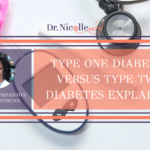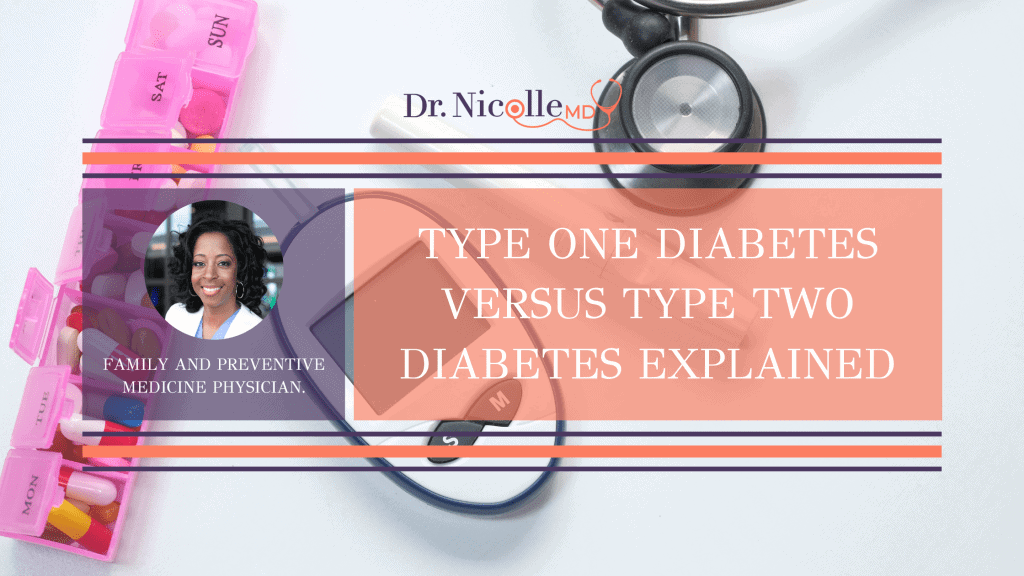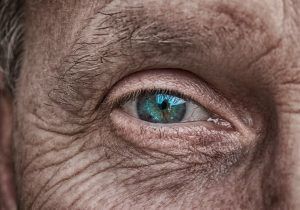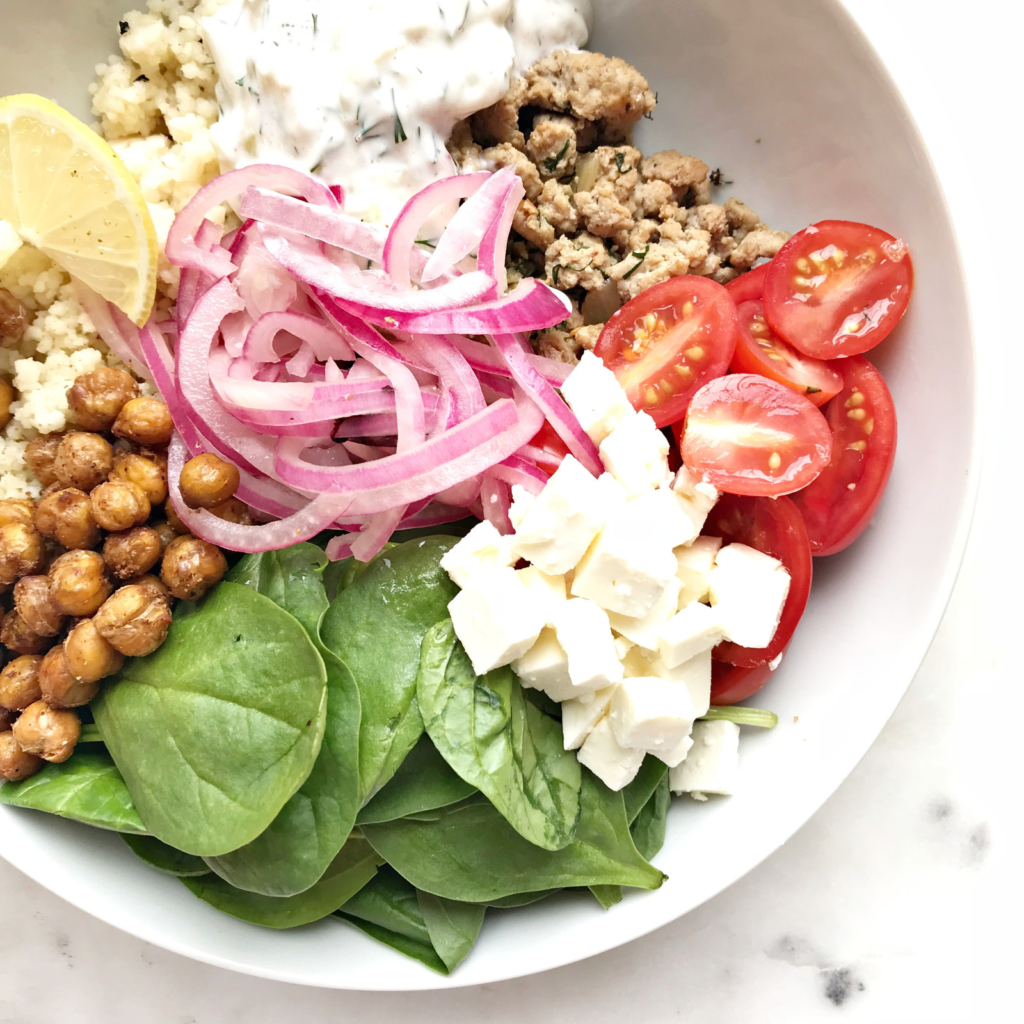

Welcome to Diabetes Prevention Thursdays! Today, let’s talk about type 1 diabetes and type 2 diabetes. If someone is asked to describe their health, they’ll usually say that they’re diabetic. Most people don’t mention whether they have type one or two diabetes. Both conditions cause the body to struggle with glucose storage and usage. Glucose is used by the body to create energy, and diabetics have impaired ability to collect the free glucose in the bloodstream, starving the body’s cells of needed energy. The two main types of diabetes have many similarities, but they are different diseases. Let’s differentiate between the two. 
Diabetes Type Two (T2D)
T2D is the most common, affecting 90 to 95% of Americans with diabetes. It occurs most often in mature individuals over the age of 45, but teenagers, young adults, and children are being affected, too. Diabetes type two is when your body can still produce insulin, but the insulin produced is much less useful. You actually become resistant to this hormone that the body needs to regulate your blood glucose levels.
Risk Factors
- Ethnicity plays a huge role in the risk of developing T2D. According to Harvard Medical School, Asian Americans, African Americans, Native Americans, and Hispanics are more likely to develop T2D.
- Genetics is another risk factor. Inheriting certain genes makes you three times more likely to develop diabetes. The main culprit is lipids inside the pancreatic B cell membranes, which cause blockage of the process of storing and converting glucose to energy.

- Obesity is another risk factor for anyone with a body mass index (BMI) of 25 or higher.
- Smoking increases your risk of developing T2D by 30 to 40%.
- A lack of exercise and an unhealthy diet also increases your risk.
- Environmental factors certainly contribute risk.
- T2D might even be the consequence of having too little vitamin D.
- And finally, age certainly plays a big role.

Type One Diabetes (T1D)
T1D only affects around five percent of Americans, and it shares many similarities with T2D, but it develops differently. T1D is an autoimmune disorder, meaning that the immune system attacks and destroys the pancreatic beta cells that produce insulin. It’s unknown why the immune system attacks the pancreatic cells, but during the process, the pancreas stops making insulin, and supplemental insulin is needed from that time on. Symptoms of T1D appear much faster and are much more profound. Although adults can develop T1D, and men are more at risk than women, it’s most prevalent among children, and it typically sets in at puberty. The rate of increase globally is at three percent annually among children. 
Risk Factors
The risk factors are highly debatable in T1D, but it comes down to a few potential culprits.
- Genetics play a role if a child has beta-cell autoantibodies. This affects the way their bodies process glucose because the antibodies automatically destroy insulin or beta cells.
- According to Stanford Children’s Health, being Caucasian increases your risk of developing T1D, which is the opposite of T2D.
- Having cystic fibrosis, which causes scarring on the pancreas that stops the organ from producing insulin, also puts you at higher risk.
- Hemochromatosis, which causes an overload of iron that can damage the beta-pancreatic cells, is also a risk factor.
- Viral childhood infections can also cause T1D, such as rubella, measles, and mumps.
- Many other autoimmune disorders in which the immune system attacks organs such as the pancreas can lead to T1D. Examples of these disorders include celiac disease and thyroid autoimmune disease.
- Stress can lead to autoimmune dysfunction and the subsequent development of T1D.
 T1D is a challenging condition that affects young and older people, but with proper care, frequent monitoring, and simple lifestyle changes, you can lead a pleasant life with the condition.
T1D is a challenging condition that affects young and older people, but with proper care, frequent monitoring, and simple lifestyle changes, you can lead a pleasant life with the condition.
Common Symptoms
The symptoms of T2D can manifest in various ways, including:
- Increased urination
- Dehydration and thirst
- Increased appetite
- Blurry vision
- Unexplained fatigue
- Numbness or tingling in the hands and feet
- Wounds that take longer to heal
- Unexpected weight loss
- Thrush
Hyperglycemia is defined as high blood glucose levels. Patients with hyperglycemia exhibit dry mouth, nausea, vomiting, a fruity smell on the breath, difficulty breathing, and coma. Untreated hyperglycemia can be life-threatening. Hypoglycemia is a potentially life-threatening condition of having extremely low blood glucose levels. Symptoms include shakiness, a pale face, sweating, chills, anxiety, and a rapid heartbeat.  Other hypoglycemic symptoms include dizziness, lightheadedness, nausea, weakness, extreme fatigue, tingling, and severe headaches. If untreated, patients can develop seizures, loss of consciousness, or coma. The symptoms of hypoglycemia and hyperglycemia occur more commonly in T1D than T2D, and they are more severe in T1D.
Other hypoglycemic symptoms include dizziness, lightheadedness, nausea, weakness, extreme fatigue, tingling, and severe headaches. If untreated, patients can develop seizures, loss of consciousness, or coma. The symptoms of hypoglycemia and hyperglycemia occur more commonly in T1D than T2D, and they are more severe in T1D.
Can T2D Change Into T1D?
The simple answer is no. Even though the two main types of diabetes share similarities, they aren’t caused by the same factors. Patients who suffer from an uncommon condition called latent autoimmune diabetes in adults (LADA) can be thought to have T2D when they actually have T1D. LADA mimics T2D, but the fact that it is an autoimmune condition which prevents pancreatic cells from producing insulin makes it a T1D disorder. The LADA test establishes the diagnosis. So, to clarify again, T2D cannot become T1D.
Food For Thought
Whichever type of diabetes you suffer from, you should adopt a healthier lifestyle to support treatment. Insulin-dependent individuals can’t simply throw out their injections. Instead, they should use lifestyle changes to improve their overall health while adequately treating their T1D. T1D is undoubtedly stressful, but amazing advancements are being made that could change the way we treat it in the near future. Don’t give up hope, even if you have to rely on insulin.
If you would like to receive a free resource sheet to help you take control of diabetes, click the button below to receive your gift.
I wanted to talk about this topic because it is absolutely possible to prevent and even reverse Type 2 Diabetes (but you cannot reverse Type 1). Yes, it’s possible! and emerging studies looking at lifestyle medicine and prevention support this! But I always tell my patients that you must be dedicated and diligent in adopting a healthy lifestyle to get the best results. You can create certain behaviors and practices that will not only enrich your life, but that you can pass on to your family, friends, and community, to help break the cycle of this chronic disease so that you can leave a legacy of health to your loved ones.
I use functional medicine and lifestyle medicine as the first line of treatment, before medications, to treat lifestyle-related chronic diseases. Lifestyle-related chronic diseases include diabetes, hypertension, obesity, and some cancers, just to name a few. Lifestyle practices, such as eating a low glycemic, whole-food plant-based diet and regular physical activity, can help you improve your blood sugar levels, maybe reverse type 2 diabetes. In certain cases, these approaches may even outperform pharmaceutical therapy.
But I always tell my patients that conventional medications may be appropriate at this time to prevent catastrophic illness, but over time, you can work to make the necessary lifestyle changes to possibly reduce and/or eliminate medications. Please remember to always consult your physician for your particular needs and circumstances prior to making any decisions whatsoever.
Is Dietary Supplementation Right For You?
When it comes to managing your blood sugars (in general), pre-diabetes, and diabetes, there are many things that you can do to help control your blood sugar levels. One important aspect is diet. What you eat affects your blood sugar, so it’s important to be mindful of what goes into your body.
But it is very important to note that we are not eating the same foods we ate years ago because the soils have been depleted of critical nutrients through current industrial farming practices. And because the soil is not as good as it used to be, the food supply (grown from the depleted soil) is not as good as it used to be. For example, you are not getting the same levels of chromium and magnesium as you would have gotten 30 or even 50 years ago.
Second, much of the food has been processed and genetically altered, which can impact the inherent and unique nutritional composition that each food possess. For example, ancient einkorn wheat has less gluten, more protein, more Vitamin A, and more beta carotene, than modern genetically modified wheat.
Third, the toxic load in the environment today is much higher than 100 years ago. We can see this with global warming, toxic landfills, polluted oceans and waterways, etc. Toxicity levels interfere with nutrient assimilation and absorption not just into the foods, but into our bodies as well. We often see elevated blood sugar levels with poor nutrition and toxicity.
In addition to diet, there are dietary supplements that can have an impact on blood sugar levels. Dietary supplements for diabetes are becoming increasingly popular as people look for ways to improve their blood sugar control.
For some people, vitamin and mineral supplements offer important health benefits. Supplements are designed to fight deficiencies found in our diet and complement the food we eat regularly. Supplements are basically “helping hands” to our daily food.
If you suspect that you aren’t getting the nutrients you need, consider shifting your focus from supplements to eating better.
And if you are unable to eat better, the supplements in my Blood Sugar Support Bundle may provide the extra boost you need.
These are my favorite Diabetes Prevention Supplements to use! This Blood Sugar Support Bundle will ensure you have the intake of the important vitamins, minerals, and probiotics to decrease inflammation and boost your innate wellness day and night. Taken together, it’s a solid plan for increasing your body’s natural resiliency while encouraging healthy blood sugar levels.
For best results make sure you use these supplements with dietary changes including a whole food plant-based diet, regular exercise (at least 2-3x per week), regular sleep (8 hours per night), and intermittent fasting (at least 1-3x per week).
It’s important to note that supplements are NOT a replacement for your regular medication regimen prescribed by your doctor. However, they can be used in addition to help manage your blood sugar levels.
Supplements have the potential to interact with diabetes medications, so it’s important to speak with a healthcare provider before starting any new supplement regimen. Have you tried any dietary supplements for your diabetes? Share your experience in the comments below!
Tools For Diabetes Prevention and Monitoring
Blood Sugar Monitoring
As you know, I always stress the importance of taking control of your health. Monitoring your blood sugar levels is one of the best ways to do this. To do this, a single drop of blood is collected with disposable lancets and placed on a disposable test strip, which you insert into a home blood-sugar monitoring device, called a glucometer.
The common times for checking your blood sugar are when you first wake up (fasting), before a meal, 2 hours after a meal, and at bedtime; however, you should check your blood sugar as many times a day as your health care team suggests.
Monitoring your blood sugar level provides you and your doctors with important knowledge about how food, activity, medication, stress, and other elements might affect your blood sugar levels. This data will assist you and your doctor in developing a therapy plan that is suited to your demands.
There are several types of blood glucose meters, lancets, and test strips to choose from. I often recommend this glucometer, lancets, and test strips.
Weight Monitoring
Since weight management is very important in combatting chronic diseases such as diabetes, I recommend that you be mindful of your weight and its fluctuations, and that you monitor your weight AT LEAST on a weekly basis. I recommend a scale that includes a body composition monitor (*this scale cannot be used with a pacemaker or other implanted devices).
Physical Activity
Physical activity (or exercise) can improve your health and reduce the risk of developing several chronic diseases like high blood pressure, type 2 diabetes, and cancer, just to name a few. Physical activity actually improves insulin sensitivity. Physical activity can improve your mood, boost your immune system, and even help you maintain a healthy weight.
I often recommend yoga and resistance training for physical activity, but as you are aware, there are plenty of forms of “movement” that you can do! But for the basics, especially if you’re just getting started, yoga and resistance training are where I would start.
Yoga
Yoga can be a great way to improve your strength and flexibility, manage your stress, improve your heart health, and lose weight! I recommend using this yoga mat to get started with your yoga practice today!
Resistance Training
Resistance training is the mainstay for overall health. It not only has beneficial effects on reducing body fat, it also increases muscle size and strength. Here are some basic resistance bands that I recommend to everyone. They are great for physical therapy, yoga, strength training, and excellent for traveling.
Food!
Remember, living a healthy lifestyle including eating a whole foods plant-based diet and regular physical activity are the best ways to prevent diabetes.
The Diabetes Meal Plan is geared towards those people with diabetes or prediabetes. The foods are moderately low in carbs, low glycemic, fiber rich, and contain a balance of nutrients to help prevent blood sugar spikes and dips. Foods are also included that may help to lower blood sugar.
Please talk with your doctor about any complementary health approaches, including supplements, you use.
Dr. Nicolle Martin
Some of the links in this article are "affiliate links", a link with a special tracking code. This means if you click on an affiliate link and purchase the item, we will receive an affiliate commission.
The price of the item is the same whether it is an affiliate link or not. Regardless, we only recommend products or services we believe will add value to our readers.
By using the affiliate links, you are helping support our Website, and we genuinely appreciate your support.
Last updated on January 28th, 2022 at 03:28 am

Minimize Medications. Maximize Health.
Are you super busy but need to take control of your health? Are you tired of being tired? Subscribe to my “Minimize Medications, Maximize Health Blog” and I’ll give you 7 Tips to Get Healthy in No Time absolutely FREE.







